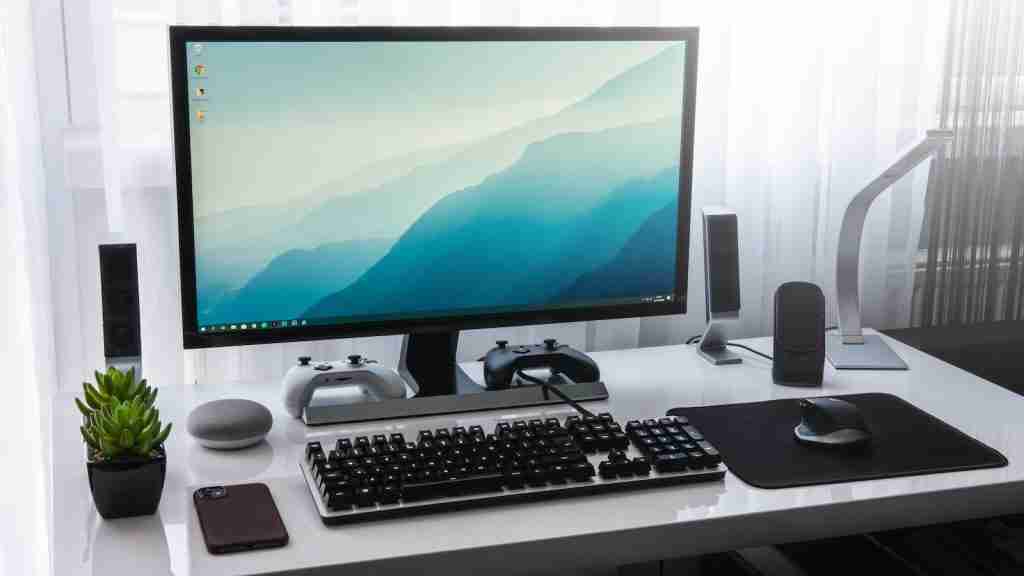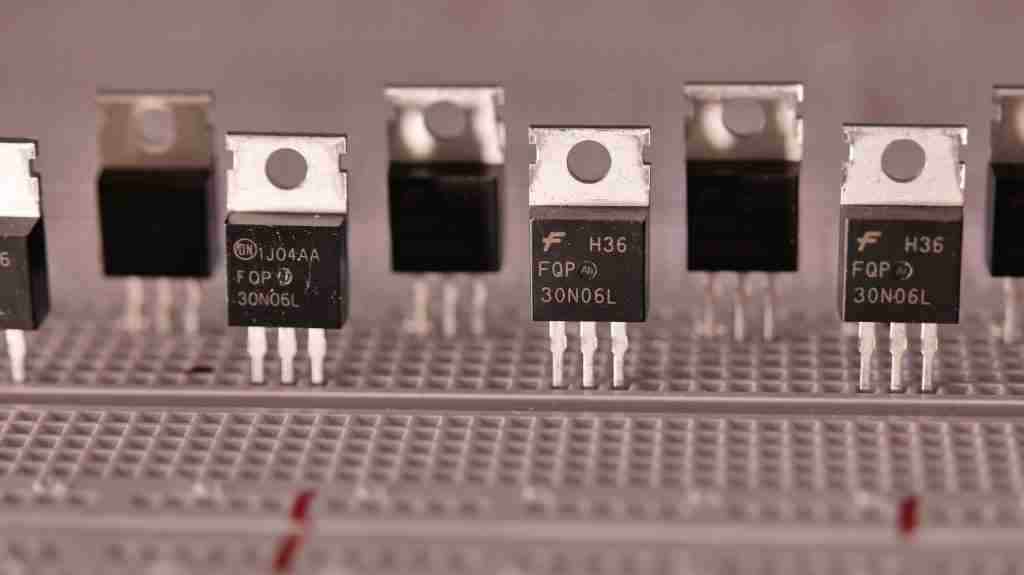24 Fun Facts About Computers: Embark on a Tech Adventure
1. The first computer mouse was made of wood.
This revolutionary input device, designed by Douglas Engelbart in 1964, featured a wooden case and a single button. It was appropriately named the “mouse” because it resembled a small rodent.
The wooden mouse was connected to the computer via a cable and used two perpendicular wheels to track movement.
2. The first computer virus was created in 1983 and was called “Elk Cloner.”
This significant event marked the birth of malicious software that could infect computers and replicate itself. Elk Cloner was developed by a high school student named Rich Skrenta as a prank.
It targeted Apple II computers and spread through infected floppy disks. When the disk was inserted into a new machine, the virus would activate and display a humorous poem.
3. The world’s first computer programmer was a woman named Ada Lovelace.
One of the fun facts about Computers is that Ada Lovelace, born in 1815, was a mathematician and writer who collaborated with Charles Babbage on his Analytical Engine, an early mechanical general-purpose computer. Lovelace’s most significant contribution was realizing that the machine had the potential to do more than just calculations.
She envisioned the concept of creating programs for the Analytical Engine, making her the world’s first computer programmer.
4. The first electronic computer weighed more than 30 tons.

This massive machine was developed during World War II in the United States. Completed in 1945, ENIAC utilized vacuum tubes to perform calculations and occupied a vast space of approximately 1,800 square feet.
Its weight exceeded 30 tons, and it required significant electrical power to operate. Despite its size and weight, ENIAC played a crucial role in scientific research and calculations, marking a significant milestone in the evolution of computers, which is one of the fun facts about Computers.
5. The first hard disk drive had a capacity of 5 megabytes and was the size of a refrigerator.
This pioneering storage device, introduced in the late 1950s, was a massive machine resembling the size of a refrigerator.
Its technological advancements marked a significant leap forward in data storage capabilities, providing a more efficient and reliable alternative to earlier storage methods such as punch cards and magnetic tapes.
6. The first computer game was called “Spacewar!” and was developed in 1962.
This groundbreaking creation emerged as a collaborative effort by Steve Russell, Martin Graetz, and Wayne Wiitanen at the Massachusetts Institute of Technology (MIT). “Spacewar!” was a two-player game that simulated a space battle between spacecraft, showcasing the potential of computers for interactive and immersive experiences.
Its development paved the way for the thriving video game industry we know today.
7. The world’s first webcam was used to monitor a coffee pot at the University of Cambridge.
The webcam was positioned near a coffee pot, allowing users to check its status remotely through the internet.
This ingenious invention not only provided a convenient solution for coffee lovers eager to avoid wasted trips, but it also laid the foundation for the widespread use of webcams in various fields, from video conferencing to surveillance.
8. The first commercial computer was released in 1951 and cost around $1.5 million.
One of the fun facts about Computers is that this computer, known as the UNIVAC I (Universal Automatic Computer), marked a pivotal moment in computing history. The UNIVAC I was designed by J. Presper Eckert and John W. Mauchly and offered businesses and organizations unprecedented computational power.
Despite its exorbitant price, the UNIVAC I gained popularity and set the stage for the subsequent development and proliferation of commercial computers worldwide.
9. The first computer to defeat a human in chess was IBM’s Deep Blue in 1997.

Deep Blue, a supercomputer developed by IBM, faced off against world chess champion Garry Kasparov in a highly anticipated match.
The computer’s victory marked a significant milestone in the field of artificial intelligence and showcased the immense computational power and strategic capabilities that machines were capable of achieving.
10. The first computer mouse had only one button.
Designed by Douglas Engelbart in the 1960s, the mouse was a revolutionary input device that allowed users to navigate the computer screen with ease.
Despite its simplicity, the one-button mouse provided a novel way of interacting with graphical user interfaces, setting the stage for future advancements in computer input technology.
11. The average computer has about 1.5 gigabytes of RAM.
RAM, short for random Access Memory, is a crucial component of modern computers. It serves as temporary storage for data that the computer is actively using. On average, computers typically have around 1.5 gigabytes of RAM, although this amount can vary depending on the specific system and its intended purpose.
RAM plays a vital role in ensuring smooth multitasking and efficient program execution, allowing users to run multiple applications simultaneously without experiencing significant performance issues.
12. The first computer to use a graphical user interface (GUI) was the Xerox Alto in 1973.
This was created in 1973, and Alto introduced the concept of windows, icons, menus, and pointing devices to the computing world. This revolutionary interface transformed the way users interacted with computers, making them more accessible and user-friendly.
Xerox Alto’s GUI laid the foundation for subsequent graphical interfaces, shaping the future of personal computing, which is one of the fun facts about Computers.
13. The first computer bug was a real insect that got trapped in a computer relay in 1947.
In 1947, a significant incident in the history of computers occurred when the first computer bug was discovered. Surprisingly, this “bug” was not a software error but a real insect.
The incident took place at Harvard University, where a moth got trapped in a relay of the Mark II Aiken Relay Calculator. This incident led to the coining of the term “bug” to describe a computer malfunction or error.
14. One of the fun facts about Computers is that the first computer with a color display was the Apple II in 1977.
This was the first computer to feature a color display, revolutionizing the way users interacted with computers.
The vibrant colors offered a more immersive experience and opened up new possibilities for graphical applications, making the Apple II a groundbreaking product in the history of personal computing.
15. The world’s first computer printer was invented by Charles Babbage in the 19th century.
Among his many inventions, Babbage is credited with inventing the world’s first computer printer.
His device, known as the “Difference Engine,” was designed to automatically print out calculations and results, eliminating the need for manual transcription and reducing errors in computations.
16. The first computer with a mouse and graphical interface was the Apple Lisa in 1983.
This groundbreaking computer system was the first to incorporate a mouse and a graphical user interface (GUI). The mouse revolutionized the way users interacted with computers by providing a more intuitive and precise input method.
Combined with the graphical interface, the Apple Lisa set the stage for the modern graphical user interfaces that we use today.
17. The world’s first computer network was called ARPANET and was created in 1969.
Developed by the Advanced Research Projects Agency (ARPA) of the United States Department of Defense, ARPANET laid the foundation for modern computer networking. Its primary purpose was to facilitate communication and resource sharing among research institutions and universities.
By connecting computers at various locations, ARPANET enabled researchers to exchange information and collaborate on projects, marking a significant milestone in the development of the Internet.
18. The first computer with a built-in hard disk drive was the IBM 305 RAMAC in 1956.
One of the fun facts about Computers is that the HDD revolutionized data storage by replacing the cumbersome and less reliable magnetic tape systems. The IBM 305 RAMAC’s HDD had a storage capacity of 5 megabytes, a breakthrough at the time.
This innovation paved the way for subsequent advancements in computer storage, enabling faster and more efficient data access and manipulation.
19. The first computer to use transistors instead of vacuum tubes was the IBM 7090 in 1959.

Transistors, smaller and more reliable than vacuum tubes, revolutionized the field of computing by improving speed, reducing power consumption, and enhancing overall performance.
The IBM 7090 was a powerful scientific and technical computer that played a crucial role in various fields, including aerospace, engineering, and scientific research.
20. The first computer to play audio and video was the Amiga 1000 in 1985.
This breakthrough technology allowed the Amiga 1000 to generate and display high-quality graphics and play audio simultaneously, marking a significant advancement in multimedia computing.
With its advanced graphics and sound capabilities, the Amiga 1000 found applications in gaming, video production, and desktop publishing, becoming a beloved platform for creative professionals and enthusiasts alike. Its innovative features set the stage for the development of future multimedia computers.
21. The first computer capable of multitasking was the Xerox Star in 1981.
This revolutionary machine allowed users to perform multiple tasks simultaneously, enabling greater productivity and efficiency.
Before its release, computers were limited to executing one task at a time, making the multitasking capability of the Xerox Star a groundbreaking development.
22. The first computer with a built-in modem for internet connectivity was the Commodore 64 in 1985.
With the inclusion of a modem, users could connect to bulletin board systems (BBS) and dial-up services, opening up a world of online communication and information sharing.
The Commodore 64’s built-in modem played a pivotal role in shaping the future of computer networking and laid the foundation for the internet as we know it today, which is one of the fun facts about Computers.
23. The first computer with a built-in Wi-Fi module was the iBook G3 in 1999.
With this feature, users no longer need to rely on wired connections or external Wi-Fi cards to access wireless networks. The iBook G3’s built-in Wi-Fi module provided greater convenience and mobility, enabling users to connect to the internet and access online resources seamlessly.
This innovation set the stage for the widespread adoption of wireless connectivity in computers, leading to the pervasive wireless landscape we enjoy today.
24. What are the two main types of computers?

The two main types of computers are :
Personal Computers (PCs): Personal computers are designed for individual use and are commonly found in homes, offices, and educational institutions. PCs are versatile and can perform a wide range of tasks, such as word processing, web browsing, multimedia playback, gaming, and more.
They typically have a desktop or laptop form factor and are powered by an operating system like Windows, macOS, or Linux.
Server Computers: Server computers are designed to provide services and resources to other computers, known as clients, over a network. They are optimized for performance, reliability, and security to handle a large number of simultaneous requests and data processing.
Servers are commonly used in businesses, data centers, and cloud computing environments to host websites, store and retrieve data, run applications, and facilitate communication and collaboration among users.
FAQs
A computer is an electronic device that is capable of performing various tasks by executing instructions and processing data. It consists of hardware components such as a central processing unit (CPU), memory, and input/output devices. Computers can be programmed to carry out complex calculations, store and retrieve information, process data, and perform a wide range of tasks.
The term “computer” generally refers to a machine that can perform computations and process information. It derives from the Latin word “computare,” which means “to calculate.” However, in a broader sense, the computer can also refer to any device or system that processes data and performs tasks based on programmed instructions, including modern smartphones, tablets, and other electronic devices.
The first computer invented was called the “ENIAC” (Electronic Numerical Integrator and Computer). It was developed during World War II and completed in 1945. The ENIAC was a large electronic machine that used vacuum tubes to perform calculations. It was primarily used for military applications and played a crucial role in calculating artillery firing tables.
The title of “father of computers” is often attributed to Charles Babbage, an English mathematician, and inventor. Babbage is known for conceptualizing and designing the first mechanical computer, called the “Analytical Engine,” in the 19th century. Although the Analytical Engine was never fully constructed during Babbage’s lifetime, his ideas and designs laid the foundation for modern computers.
The concept of computers and computing dates back several centuries, with various precursor machines and devices developed for calculation and automation. However, the modern digital computer, as we know it today, began to take shape in the mid-20th century. The electronic computer era started with the development of machines like the ENIAC in the 1940s. Since then, computers have undergone significant advancements, evolving into the powerful and ubiquitous devices we rely on today.







